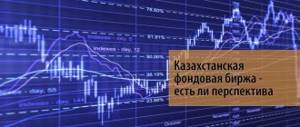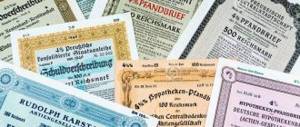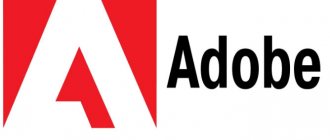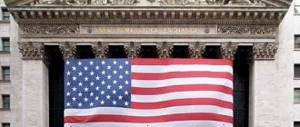The American stock exchange NYSE American or NYSE MKT (formerly American Stock Exchange, AMEX) is one of the most popular stock exchanges in the world, which is currently the second largest in the United States.
The AMEX exchange began its history at the beginning of the 20th century, in 1911, when the New York Curb Market Association grew out of a company of stock traders in New York who traded on city boulevards and avenues, which became the ancestor of the modern NYSE MKT.
Official website of the exchange : nyse.com/markets/nyse-american
About the exchange
| Country and site | New York, USA |
| Year founded and owner | 1849, NYSE Euronext |
| Capitalization | $82.66 billion (2006) |
| Indexes | AMEX MMI MKT Composite MKT Financial Subsector MKT HealthcareSubsector MKT Industrial Subsector MKT Natural Resources Subsector MKT Technology Subsector Index |
| Official site | nyse.com/markets/nyse-american |
| Opening hours (Moscow time) | From 14:20 to 23:00 |
AMEX: what is it?
It's about a legend.
The American stock market at the dawn of its formation was divided into two parts. One is the street brokers, a loud crowd of poor Americans and speculators. The second is respectable aristocrats and nouveau riche. Amex was on the side of the street brokers, and the NYSE was on the side of the rich.
History of the exchange
AMEX brokers operated in an unusual way in the early 20th century. They shouted information about promotions from the windows of their offices. And investors stood under the window and shouted back at the brokers.
This is how securities were bought and sold.
This was in 1907. And in 1921, the brokers finally got the building. Especially a few blocks from the NYSE. AMEX was considered a second-class company by brokers on this platform, and the exchanges always competed.
In 1977, the NYSE offered to buy a competitor. Then AMEX had no equal, and management refused the offer.
But Amex was losing customers and leadership. During the 2008 mortgage crisis, AMEX also lost its independence. It was finally absorbed by the New York Nice Exchange.
Reorganization and mergers
The American Stock Exchange has changed its name many times.
To understand its history, I’ll break it down by year:
- 1911 The New York Curb Market Association (New York Street Stock Trading Association) appeared.
- 1953 Renamed American Stock Exchange.
- 1998 NASDAQ bought AMEX, but in 2004, trading participants bought the exchange back.
- year 2012. Merger with NYSE. Amex was first named NYSE Euronext USA, then NYSE MKT LLC and, finally, now NYSE American.
What happened to her today
To cope with the crisis, AMEX began trading futures, options and depositary receipts. In addition, an artificial delay of 350 seconds has now been introduced for transactions: a controversial way to increase the liquidity of shares.
The exchange is intended for companies with small and medium capitalization - this has not changed since the last century.
History of the formation of NYSE American
its previous name American Stock Exchange (AMEX) in 1953 and in subsequent years actively changed the image of American stock exchanges, introducing its own changes, which competitors then followed.
Thus, in the 1980s, which, frankly speaking, were far from the best for stock exchanges, AMEX increased the level of exchange margins to provide a new guarantee mechanism. In addition, a new maximum limit was introduced on the permissible drop in stock prices before the close of trading on the stock exchange, in order to protect companies from ruin and prevent the market from panicking.
In the 90s, the American Stock Exchange was the first in the world to introduce an electronic trading system using wireless terminals. This was a truly historic event and an invaluable contribution that greatly changed the approach to various exchange trading for many years.
AMEX also had some difficult times when it was acquired by the NASDAQ exchange in 1998. However, this period was also overcome - the shareholders of the American Stock Exchange bought it out in 2004. There were also moments of severe recession - with the advent of NASDAQ, the American Stock Exchange experienced a serious outflow of companies, which literally froze its development for 10 years. AMEX was saved by the intensification of trading in government bonds, futures, options and other derivatives, as well as the listing of foreign companies on the exchange.
In 2012, the AMEX Stock Exchange announced a merger with the NYSE and was renamed NYSE American or NYSE MKT LLC on May 10. It is known by this name to stock traders today.
How to list on NYSE American
The requirements for a candidate have become more modest since the days when AMEX was the country's leading exchange. If a company's share is worth more than $2, then it can try to list on Amex. True, all the company’s affairs must be extremely transparent: a lot of reports will have to be written.
A capitalization of $50 million or revenue of $75 million would also allow the company to trade shares on the stock exchange.
Toronto Stock Exchange
The initial formation of the Toronto Stock Exchange dates back to July 26, 1852, when a group of Toronto businessmen met with the intention of forming a brokers' association. But no transactions were made before 1852, so the actual creation of the exchange dates back to October 25, 1861, after the adoption of the resolution. On that day, a meeting was held at the Masonic Hall in Toronto to create a framework for facilitating the exchange of financial instruments.
With only 18 securities, mostly related to banks and real estate, trading was subject to some daily time restrictions, namely half-hour sessions during which several transactions took place. The initial cost of membership was $5, but by 1871, the cost of membership had increased significantly to $250 per seat, after which the TSX included 14 member firms. The exchange was eventually incorporated under the Ontario Act in 1878, becoming the second official exchange in Canada after the Montreal Exchange.
By 1901, the number of companies listed on the stock exchange had already increased to 100, and the annual trading volume was close to 1 million shares. In 1914, concerns about a financial panic due to the outbreak of World War I prompted the TSX to be closed for three whole months. Stocks rose in tandem with corporate profits during World War I, leading to an armistice in 1918 that ushered in a speculative period in the economy. The boom ended with the Great Depression of the 1930s. At that time, more than 2,000 investment and brokerage firms were closed in the United States. In order to cope with the economic crisis, the TSX had to merge with its main competitor, the Standard Stock & Mining Exchange.
By 1936, the TSX had become the third largest exchange in North America, with annual trading volume exceeding $500 million. In 1955, TSX membership prices reached $100,000, and annual trading volume approached a record 1 billion shares. 1977 was another record year for the exchange, with the launch of the world's first Computer Assisted Trading System and the 300 TSX Composite Index, which would become the benchmark index for the Canadian stock market. By 1980, the TSX already accounted for 80% of all equities in Canada, with an annual trading volume of 3.3 billion shares worth approximately $30 billion. The TSX maintained its leadership into the 1990s. In 1996, it became the first exchange in North America.
In 2001, the exchange rebranded, changing the last letter in the acronym and now becoming TSX. In 2002, Standard & Poors (S&P) took over management of the TSX Composite Index 300, which was renamed the S&P/TSX Composite Index.
Exchange indices
| AMEX MMI | US Blue Chip Index (similar to Dow Jones, 20 companies) |
| NYSE MKT Composite | All 3 thousand AMEX issuers |
| MKT Financial Subsector | Banks, insurance companies and investment funds |
| MKT Healthcare Subsector | Pharmaceutical and biotechnology companies |
| MKT Industrial Subsector | Industrial sector companies |
| MKT Natural Resources Subsector | An index that ranks companies by how much natural resources they use |
| MKT Technology Subsector Index | Group of IT companies |
NYSE MKT stock indexes
NYSE MKT publishes several major indices:
- Amex Gold BUGS Index - it includes 15 gold mining companies. One of the most popular indexes of this kind. Began to be listed in 1996 under the name HUI Index.
- The Amex Oil Index includes shares of the largest oil companies. Listed in 1984.
- Amex Major Market Index is a simple average of the stock prices of the 20 leading companies on the exchange. Listed since 1983.
Prospects for investing in these indices
Amex has indices with large and small companies. Large companies are steadily growing in price, but do not give high dividends. New companies in AMEX can either make an investor rich or leave him without money, going bankrupt.
Whatever companies you choose, Amex has an index to suit your needs. For example, the IT sector will bring more profits in the short term. The NYSE MKT Industrial Subsector Commodity Index is highly dependent on global political sentiment, but is unlikely to collapse for other reasons.
Choose an index depending on whether you need risk.
Features of the American Stock Exchange
Now about 10% of the total volume of transactions in shares is carried out on the American Stock Exchange; it is organized in the form of an auction. A special feature of the exchange is the fact that it presents mainly shares of medium and small businesses, that is, developing companies. This is due to fairly favorable conditions for listing a company in contrast to the parent New York Stock Exchange (NYSE).
Interesting facts about the exchange
- In the 1950s, AMEX was at the center of one of the biggest scandals in stock market history. The platform was accused of manipulating quotes and trading unregistered shares. At the same time, this was the heyday of AMEX trading.
- Amex was the first to launch wireless electronic terminals in 1990. At the same time, the site was severely crippled by NASDAQ, where electronics appeared earlier and where most of the investors moved.
- The AMEX exchange had its own radio, where they announced quotes and provided stock market analysts.
American Stock Exchange (AMEX)
The American Stock Exchange (AMEX) is one of the most popular stock exchanges in the world, which is currently the second largest in the United States. The AMEX exchange began its history at the beginning of the 20th century, in 1911, when the New York Curb Market Association grew out of a company of stock traders in New York who traded on city boulevards and avenues, which became the ancestor of the modern American Stock Exchange.
History of the American Stock Exchange (AMEX)
However, the exchange received its current name American Stock Exchange (AMEX) not so long ago - in 1953 and in subsequent years actively changed the image of American stock exchanges, introducing its own changes, which competitors then followed.
Thus, in the 1980s, which, frankly speaking, were far from the best for stock exchanges, AMEX increased the level of exchange margins to provide a new guarantee mechanism. In addition, a new maximum limit was introduced on the permissible drop in stock prices before the close of trading on the stock exchange, in order to protect companies from ruin and prevent the market from panicking.
In the 90s, the American Stock Exchange was the first in the world to introduce an electronic trading system using wireless terminals. This was a truly historic event and an invaluable contribution that greatly changed the approach to various exchange trading for many years.
by the NASDAQ exchange in 1998 . However, this period was also overcome - the shareholders of the American Stock Exchange bought it out in 2004. There were also moments of severe recession - with the advent of NASDAQ, the American Stock Exchange experienced a serious outflow of companies, which literally froze its development for 10 years. AMEX was saved by the intensification of trading in government bonds, futures, options and other derivatives, as well as the listing of foreign companies on the exchange.
Features of the American Stock Exchange
Now about 10% of the total volume of transactions in shares is carried out on the American Stock Exchange; it is organized in the form of an auction. A special feature of the American Stock Exchange is the fact that it presents mainly shares of medium and small businesses, that is, developing companies. This is due to fairly favorable conditions for listing a company, unlike the New York Stock Exchange (NYSE).
American Stock Exchange (AMEX) stock indices
AMEX publishes two of its main indices:
— The main market index of the American Stock Exchange (AMEX Major Market Index) , which is a simple average of the stock prices of the 20 leading companies on the exchange.
— American Stock Exchange Market Value Index (AMEX Market Value Index) , which is calculated as weighted by the market value of all shares listed on the exchange.











